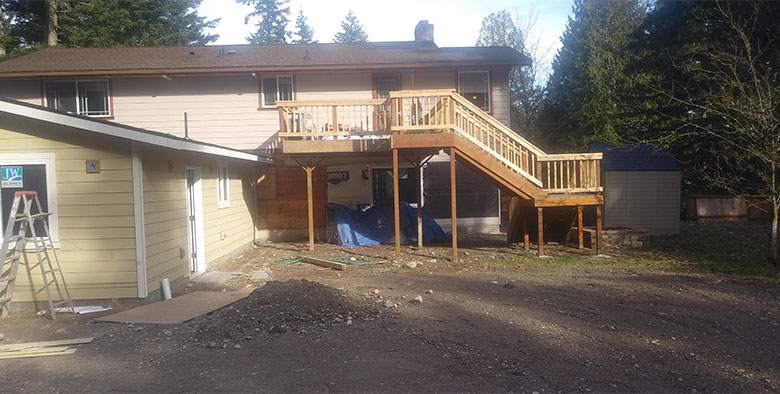A porch isn’t just a space—it’s part of the story your home tells. It’s where shoes come off, coffee is sipped, and time slows down. But building a porch isn’t as simple as laying boards and adding chairs. Many porches miss the mark long before they’re even built. That’s not due to budget or tools—it’s from skipping the details that shape how the space truly feels. What follows isn’t a checklist. It’s a closer look at the often-ignored parts of porch construction that distinguish between “just another porch” and a space that feels effortless to enjoy.
1. Intent Comes Before Blueprints
Porch construction usually begins with sketches, not reasons. But the reason behind the porch—the real reason—should guide everything else. A porch built without intent feels like an empty stage. It exists, but never quite performs.
The people who get it right think about:
- What the space will do for daily life
- Who will use it, and when
- How it fits into existing routines
When intent leads the way, the porch becomes a natural part of the home, not just an attachment.
2. Climate Isn’t Just a Factor—It’s the Foundation
Ignoring local weather patterns leads to too hot, too wet, or too cold porches. These aren’t just discomforts—they’re deal-breakers.
Here’s what often gets missed:
- Sun exposure during different times of the day
- Where water pools after it rains
- How wind travels across the lot
Building with awareness of these things means fewer adjustments later. And it turns the porch into a usable space, no matter the season.
3. Size Has a Job to Do
A porch is often built to look good on paper. But once people start using them, their real size matters. Too narrow? It’s cramped. Too deep? It feels disconnected.
The key is to plan with movement in mind:
- Enough space to walk around furniture
- Room for guests without rearranging chairs
- Flow between indoors and outdoors
Porch construction works best when size is practical, not just pretty.
4. Lighting Changes the Mood Instantly
During the day, natural light does most of the work. But once the sun drops, a porch without proper lighting loses appeal. It fades into the dark instead of becoming a soft, usable space.
Lighting to consider:
- Wall-mounted fixtures for focused brightness
- Floor-level lights for a gentle glow
- Ceiling lights with dimmers to set the tone
People don’t usually notice good lighting. But they feel it.
5. Floors Do More Than Hold Weight
Flooring sets the mood. It also sets the tone for maintenance. Many homeowners focus on the appearance of porch floors, only to find them high-maintenance or too slippery.
Smart material choices come from knowing how the porch will be used:
- High-traffic areas may need textured or slip-resistant materials
- Covered porches might benefit from smooth, sealed wood
- Open spaces need durable, weather-tolerant surfaces
The goal is a floor that looks good but also holds up, day after day.
6. Railings Frame the Entire Experience
Railings are easy to overlook during porch construction. They’re seen as a safety requirement, but they also shape the entire view and feel of the space.
Some key railing tips:
- Wide horizontal slats give a cozier, enclosed feel
- Thin vertical bars offer openness and modern appeal
- Materials like cable or glass preserve the view without losing safety
What matters is that the railings match the porch’s purpose, not just code requirements.
7. Furniture Needs a Floorplan, Too
Porch shouldn’t be designed and then filled. They should be designed around what will go in them—fitting a table after the build leads to tight corners and awkward pathways.
To prevent this:
- Measure major pieces ahead of time
- Use masking tape or chalk to sketch layout ideas
- Leave room for pulling out chairs, walking through, and opening doors
A porch should always feel ready to be used, not waiting to be figured out.
8. Outdoor Noise Travels—Soften It Where You Can
A porch may look quiet, but sound doesn’t care about appearances. Cars, lawnmowers, conversations—they all travel farther in the open air.
To reduce this, people often add:
- Planters or shrubs as soft barriers
- Textured surfaces that absorb rather than echo
- Partial screens that block sound without closing the space
It’s not about building silence. It’s about shaping a sound that feels calm, not chaotic.
9. Flexibility Extends the Porch’s Lifespan
Needs change. What works now may feel limited in a few years. That’s why a good porch isn’t locked into one use. It should grow with the home.
How to future-proof a porch:
- Leave wall space for possible enclosures
- Add wiring for fans, heaters, or speakers
- Choose materials that allow refinishing, not replacement
This kind of flexibility turns a porch from a one-time design into a space that adapts.
Conclusion
A porch is more than just lumber and nails—it’s part of how a home feels. And yet, it’s often designed without the care it deserves. Even the best-looking porch can fall short if you don’t think about the purpose, the setting, the movement, and the flexibility. How it is used every day is affected by every little thing, such the flooring, lighting, space, and furniture.
At Bergquist Designers & Builders LLC, porch construction is approached with long-term comfort in mind. It’s never about adding a feature—it’s about creating a space that feels right, lasts longer, and fits life as it changes. Build smart. Build with purpose. Build once.


